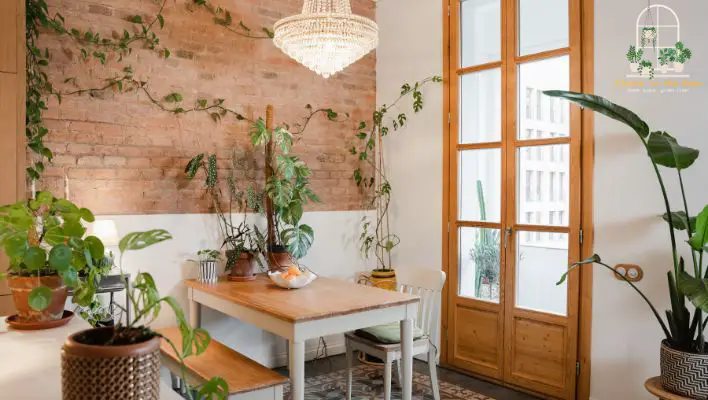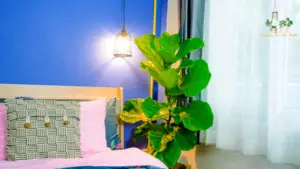This article covers the following areas –
- Understanding Indoor Plants
- Choosing the Right Plants
- Creative Ways to Arrange Indoor Plants
- Maintenance and Care
- In Conclusion
Small living spaces can pose a challenge when it comes to adding greenery to your environment. But this should not deter you. With careful planning and the selection of the right indoor plants, you can transform your compact space into a lush, green oasis. In this post, I’ll guide you on how to maximize small spaces with indoor plants.
Maximizing small spaces with indoor plants involves choosing suitable plants, creatively utilizing vertical space, using multi-purpose furniture, and artfully grouping and layering plants. It also entails understanding plant needs and providing appropriate care to maintain their health.
Keep reading for a detailed guide on making the most out of small spaces with indoor plants. We delve into strategies to choose the right plants, innovative ways to use vertical spaces and multi-purpose furniture, and tips on maintaining indoor plants. Whether you’re a novice or an experienced plant enthusiast, this guide offers valuable insights.
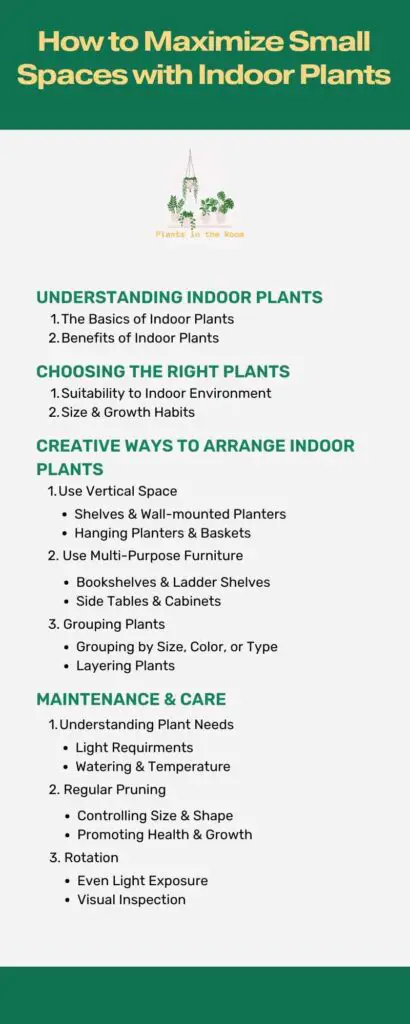
Understanding Indoor Plants
Indoor plants are more than just decorations that bring a bit of nature indoors. They are vibrant, living organisms that have the ability to change the ambiance of a room and positively impact our mental and physical health.
To effectively incorporate plants into your small space, it’s vital to understand the basics of indoor plants, their benefits, and how different types of plants might affect your living environment.
The Basics of Indoor Plants
Indoor plants are typically tropical or subtropical species that can survive and thrive in indoor conditions. These plants are typically accustomed to climates with steady temperatures, making them ideal for inside your home. Indoor plants come in many shapes and sizes – from petite succulents to towering palms – providing you with a multitude of options to match your specific space and aesthetic preferences.
Indoor plants offer a multitude of benefits beyond their visual appeal. They contribute to the overall well-being of your indoor environment by absorbing carbon dioxide and releasing oxygen, a process that cleans and refreshes the air you breathe. Additionally, some plants have the ability to absorb harmful toxins from indoor air, improving their overall quality.
Benefits of Indoor Plants
The benefits of indoor plants extend far beyond their obvious natural beauty. They can play a significant role in improving the quality of life by promoting physical and mental wellness.
Enhancing Mood and Productivity
Studies suggest that having greenery in your living or workspace can help enhance mood and boost productivity. The color green is calming to the eyes and can help reduce feelings of stress and anxiety. The presence of plants can also foster a more creative and focused mindset, making them a great addition to your workspace.
Air Purification and Humidity Regulation
As mentioned earlier, indoor plants are natural air purifiers. They absorb harmful chemicals found in household products, like formaldehyde and benzene, and release fresh oxygen. Besides, plants also release moisture into the air, serving as natural humidifiers. This can be particularly beneficial in dry indoor environments, helping to prevent dry skin, dry coughs, and even headaches.
Noise Reduction
It might surprise you to know that indoor plants can also help in noise reduction. Plants and their leaves can absorb, deflect, and refract sound waves, leading to a quieter indoor environment. This can be particularly useful in high-noise urban areas or if your small space has hard surfaces that tend to echo.
Understanding indoor plants and their multiple benefits is crucial when planning to maximize your small space. Selecting the right plants and positioning them effectively can lead to improved air quality, lower stress levels, enhanced mood and productivity, and even a more quiet and serene living space.
Choosing the Right Plants
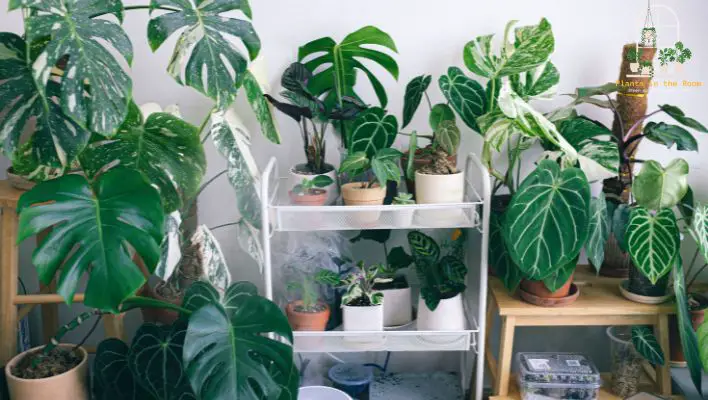
Deciding to bring nature indoors is one thing, but choosing the right plants to cohabitate with you is another. Just like us, each plant has its own personality, preferences, and needs. When selecting the perfect green companions for your small space, it’s essential to consider factors such as the suitability of the plant to your indoor environment and its size and growth habits.
Suitability to Indoor Environment
The suitability of a plant for your indoor environment is perhaps one of the most critical factors to consider when choosing indoor plants. This involves understanding a plant’s specific needs and matching them with the conditions your space can offer.
Light Requirements
Light is one of the most essential elements for a plant’s growth and survival. Different plants have different light needs, ranging from low light to bright indirect light. Before selecting a plant, understand your space’s light conditions. Plants like Snake Plant and ZZ Plant are perfect for low-light conditions, while succulents and cacti prefer bright, indirect light.
Temperature and Humidity
Most indoor plants prefer stable temperatures and high humidity, mirroring their tropical and subtropical origins. Monitor your indoor temperature and humidity levels and match them with the plants’ requirements. For example, Ferns thrive in high humidity, while Cacti prefer low humidity and warmer temperatures.
Size and Growth Habits
Understanding a plant’s size and growth habits can save you from future troubles. For a small space, you’ll want to choose plants that match the scale of your room and won’t become too overwhelming as they grow.
Size
Always remember, plants grow! A tiny cute plant at the garden store can become a huge beast over time. Always check the potential size of a plant before buying. Small to medium-sized plants, such as Pothos, Spider Plant, or Peace Lily, are good choices for small spaces.
Growth Habits
Just as plants can vary in size, they can also vary in growth habits. Some plants grow upwards, others trail downwards, and some can even climb or creep along walls. Understanding a plant’s growth habits can help you make the best decision for your space.
Trailing plants like String of Pearls or English Ivy can be hung from the ceiling or placed on a high shelf, saving floor space. Upright plants like Snake Plants or Fiddle Leaf Figs can be strategically placed to add height and depth to your space.
Choosing the right plants for your small space is more than just selecting the most appealing ones. It’s about understanding your indoor environment’s conditions and pairing them with plants that will thrive in those conditions.
By considering the plant’s light, temperature, and humidity requirements, as well as their size and growth habits, you can curate a collection of indoor plants that not only survive but thrive in your home.
Creative Ways to Arrange Indoor Plants
When it comes to integrating plants into a small space, creativity is key. It’s not just about squeezing as many pots as you can onto your windowsill or coffee table; it’s about designing an environment where you and your plants can thrive.
To effectively maximize a small space with indoor plants, you must explore beyond the traditional table and floor setups. This section will explore some creative strategies, including vertical space, multi-purpose furniture, and artful plant grouping.
Use Vertical Space
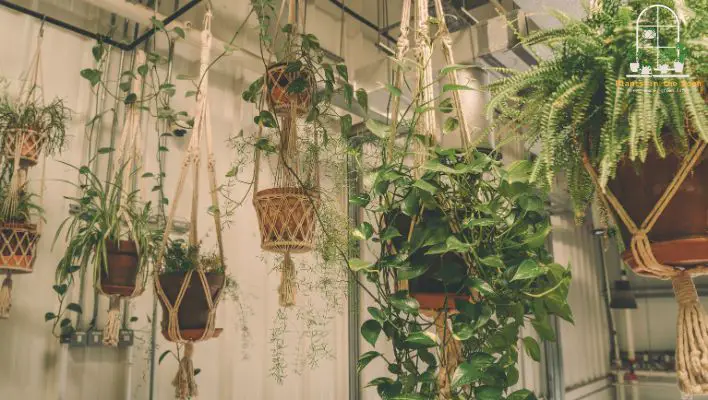
In small living environments, the floor and table space are often scarce. But if you look up, you’ll find an abundance of unused vertical space just waiting to be explored. You can create an eye-catching green display by focusing upwards rather than outwards without compromising your precious floor space. From shelves and wall-mounted planters to hanging baskets, here’s how you can transform your vertical space into a verdant oasis.
Shelves and Wall-mounted Planters
Shelves and wall-mounted planters offer an ingenious solution to maximize the vertical dimension of your room. They provide more room for your plants and contribute to a more structured and organized aesthetic.
Installing Shelves
Installing shelves for your plants involves more than just fixing them to your wall. Here are some points to consider:
- Positioning: Before installing the shelves, ensure the location gets adequate light for the plants you intend to place there. Also, consider the height; the shelves should be easily accessible for watering and maintenance.
- Spacing: Ensure you leave enough space between each shelf for your plants to grow. The height of your plants when fully grown should guide this.
- Styling: When arranging your plants on the shelf, consider factors such as plant height, color, and texture. Mixing and matching can create a visually appealing display. Also, adding other elements like books, ornaments, or framed photos can give your shelves a personal touch.
Wall-mounted Planters
Wall-mounted planters are another innovative way to use vertical space. They directly attach to your wall, making your plants look like living wall decor. Here are some tips:
- Type of Planter: Wall-mounted planters come in different styles, from simple pots to elaborate frames. Choose a style that suits your interior decor.
- Placement: Similar to shelves, ensure the location gets enough light for your plants and is easily accessible for care.
- Plant Selection: Not all plants are suitable for wall-mounted planters. Choose plants with a more compact growth habit. Trailing plants can also look great as they cascade down the wall.
Hanging Planters and Baskets
Hanging planters and baskets can suspend your greenery in the air, creating an impressive visual impact. They are ideal for plants with trailing or cascading growth habits and can be hung from the ceiling, wall hooks, or even shelf brackets.
Types of Hanging Planters and Baskets
There are various types of hanging planters and baskets available, such as:
- Ceramic Planters are sturdy and come in various designs, colors, and shapes. They often have drainage holes and come with a detachable saucer to avoid water spills.
- Macramé Hangers: These are hand-knotted hangers usually made from cotton rope. They are flexible and can hold pots of different sizes.
- Metal and Wire Baskets: These give a more modern look. They are durable and often have a liner to prevent soil and water from spilling.
Plant Selection for Hanging Baskets
Some plants are better suited for hanging baskets due to their trailing growth habit. Some popular choices include:
- Pothos (Epipremnum aureum): Known for its easy care and long, trailing vines.
- String of Pearls (Senecio Rowleyanus): Unique for its pea-like foliage that trails down the basket.
- Spider Plant (Chlorophytum comosum): Characterized by arching leaves and trailing plantlets.
- English Ivy (Hedera helix): Known for its vigorous trailing growth and its ability to adapt to different light conditions.
Remember, the location of your hanging baskets should consider both the plants’ aesthetics and light requirements. Hang them near windows or under skylights where they can receive ample light. However, be careful not to place them near heat or cold drafts as they can damage the plants.
Use Multi-Purpose Furniture
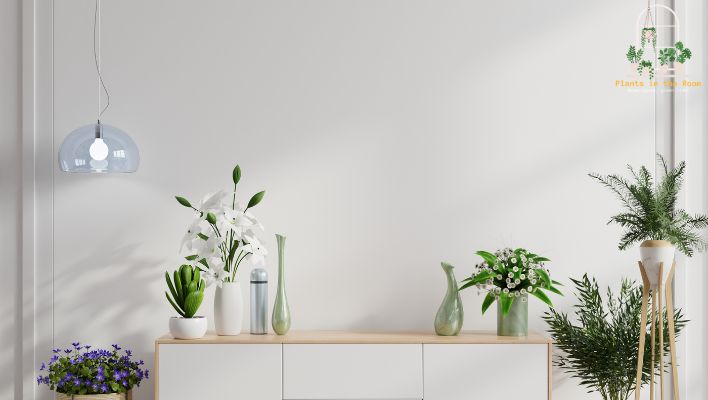
One key principle of small-space living is functionality; every piece of furniture should serve a purpose — or, better yet, multiple purposes. And for plant lovers, what could be better than furniture that can double up as a display for your favorite indoor greenery? Here’s how to transform ordinary furniture pieces into strategic plant holders, turning your living area into a lush, multi-functional space.
Bookshelves and Ladder Shelves
Bookshelves and ladder shelves can be multi-functional pieces in your living space, serving their original purpose while also acting as elegant plant stands.
Bookshelves as Plant Stands
With the vertical space that bookshelves offer, they can house numerous plants, transforming the feel of your room from plain to verdant. Here’s how to effectively use a bookshelf as a plant stand:
- Location: First, ensure that your bookshelf is in a place that gets sufficient light for the plants you want to display.
- Arrangement: When arranging your plants, consider their size and light needs. Place larger, low-light plants at the bottom and smaller, high-light plants at the top.
- Design: Mix and match your plants with books and other decorative items for a balanced, aesthetically pleasing look.
Ladder Shelves for Tiered Display
With their tiered design, Ladder shelves offer an excellent alternative for a graduated display of your plants.
- Positioning: Place the ladder shelf near a window or light source to ensure your plants get the necessary light.
- Plant Selection: Display a variety of plants with varying sizes, colors, and textures to create an appealing, diverse aesthetic. Trailing plants can look particularly lovely on the higher tiers.
- Decor: Just like with bookshelves, don’t hesitate to combine your plants with other decorative items for a unique, personal touch.
Side Tables and Cabinets
Side tables and cabinets are other versatile pieces that can be transformed into plant stands.
Side Tables as Plant Stands
A side table is a perfect spot to display a striking plant. It’s especially useful for larger plants that need more space.
- Spotting: Position the table in a well-lit area, preferably near a window, but be wary of direct sunlight that could harm your plant.
- Styling: Pair your plant with other objects, such as a lamp, a stack of books, or a decorative item, to create a balanced vignette.
Cabinets for Plant Display
Cabinets, while providing storage space, can also house your plants.
- Top Display: The top of a cabinet is a great place for tall or trailing plants that will add height and interest to your room.
- Inside Display: If your cabinet has glass doors, you can place plants inside to create a mini indoor garden. This works especially well with small plants and succulents.
Remember, when using furniture as plant stands, consider the light requirements of each plant to ensure they are placed in suitable locations. You can create a vibrant, green living space using multi-purpose furniture, even in the smallest areas.
Grouping Plants
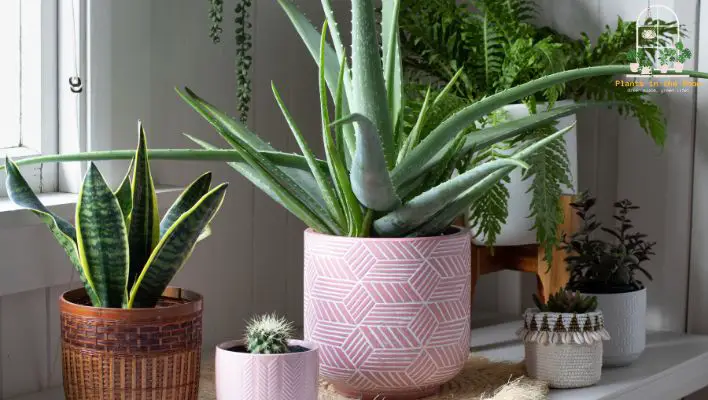
A solitary plant can be a beautiful statement, but a group of plants can create a lush, mini indoor jungle that has the power to transform your space. By thoughtfully arranging your plants, you can create visual harmony and even generate a beneficial microclimate, as plants can help increase the humidity in their immediate environment, which is often beneficial for their peers. Here’s how to create stunning groups with your indoor plants.
Grouping by Size, Color, or Type
Grouping plants by size can provide a clean and orderly look. Try placing taller plants towards the back and smaller ones in the front to ensure that every plant is visible and gets the light it needs.
You can also group plants based on their foliage color or flowers. For instance, you can create a calming effect by grouping green plants of different shades together. Alternatively, a group of plants with colorful foliage or flowers can make a vibrant, eye-catching display.
Grouping by type can help create thematic displays. For example, you can create a tropical corner with a group of lush, tropical plants or a desert vibe with a cluster of cacti and succulents. Remember that grouping by type also often means that the plants will have similar care requirements, making maintenance easier.
Layering Plants
Another strategy for grouping plants is layering. Placing plants of different heights together creates an interesting, tiered arrangement that draws the eye. To effectively layer plants, follow these steps:
- Choose Plants of Different Heights: Select plants of varying heights. You’ll need tall, medium-sized, and small plants.
- Arrange by Height: Place the tallest plants at the back, mid-sized plants in the middle, and the smallest plants at the front. This tiered arrangement will ensure that all plants are visible and get their share of light.
- Consider Growth Habit: Consider the plants’ growth habits as you arrange them. Upright plants work well at the back while trailing plants look great in the front.
- Create Depth: Use plant stands or books to elevate some plants and create depth.
By carefully grouping and layering plants, you can create a green haven that maximizes your space and adds a beautiful, living element to your home decor. Remember that plants are versatile and forgiving, so feel free to experiment with arrangements until you find what works best for your space and your plants.
Maintenance and Care
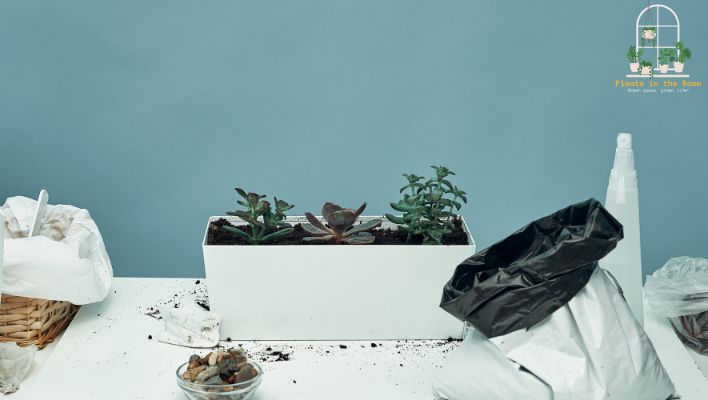
Once you’ve curated a beautiful collection of indoor plants and arranged them in creative ways within your small space, the journey doesn’t end there. Your green friends’ ongoing maintenance and care are crucial to their survival and flourishing. This requires a keen understanding of each plant’s specific needs, regular pruning to ensure healthy growth and plant rotation to expose all sides to adequate sunlight. This section delves deeper into these essential elements of plant care.
Understanding Plant Needs
Plants are like people; each species has unique needs and preferences, particularly when it comes to light, water, and temperature. Understanding these needs and providing the appropriate care are the first steps in ensuring your plants thrive.
Light Requirements
Light is vital to a plant’s photosynthesis process. Some plants need a lot of bright, indirect light, while others can do with less. Research each plant’s light requirements and place them in your space to ensure they get sunlight.
Watering and Temperature
Overwatering is a common mistake many indoor plant owners make. The frequency of watering will depend on the type of plant, its size, and the climate. Similarly, temperature preferences vary between species. Most indoor plants prefer a stable indoor climate, not too hot and not too cold.
Regular Pruning
Pruning is not just for the garden; indoor plants can also benefit from regular trimming. It’s a simple practice that can make a significant difference in the health and appearance of your plants.
Controlling Size and Shape
Regular pruning helps control the size and shape of your indoor plants, an essential aspect, especially in small spaces. Pruning prevents your plants from becoming too large and unruly.
Promoting Health and Growth
Pruning doesn’t only help maintain your plant’s shape, but it also contributes to its overall health. Removing dead or dying leaves allows the plant to redirect energy to new growth. Plus, it encourages bushier growth, making your plant look lush and full.
Rotation
If you’ve ever noticed your plants leaning towards the light, you’ve observed a phenomenon called phototropism. Plants naturally grow towards their light source, and rotating them ensures they grow evenly.
Even Light Exposure
Regularly rotating your plants, especially those near windows, ensures all sides of the plant get equal exposure to light. This practice encourages balanced growth and prevents your plant from becoming lopsided.
Visual Inspection
Rotation also provides an opportunity for a quick visual inspection. As you turn your plants, you can check for signs of pests or diseases, ensuring early detection and treatment if needed.
Successfully maintaining and caring for your indoor plants involves a holistic understanding of each plant’s needs and regular pruning and rotation practices. By giving your plants the care they require, you’ll be rewarded with a vibrant and lush indoor garden that complements your small space perfectly.
In Conclusion
Introducing plants into a small space can be a transformative experience. With the right selection, arrangement, and care, you can maximize your small space and enjoy a green, vibrant atmosphere. Remember, the key is in understanding your space and the needs of your plants. Doing this will give you a thriving indoor garden in no time!

